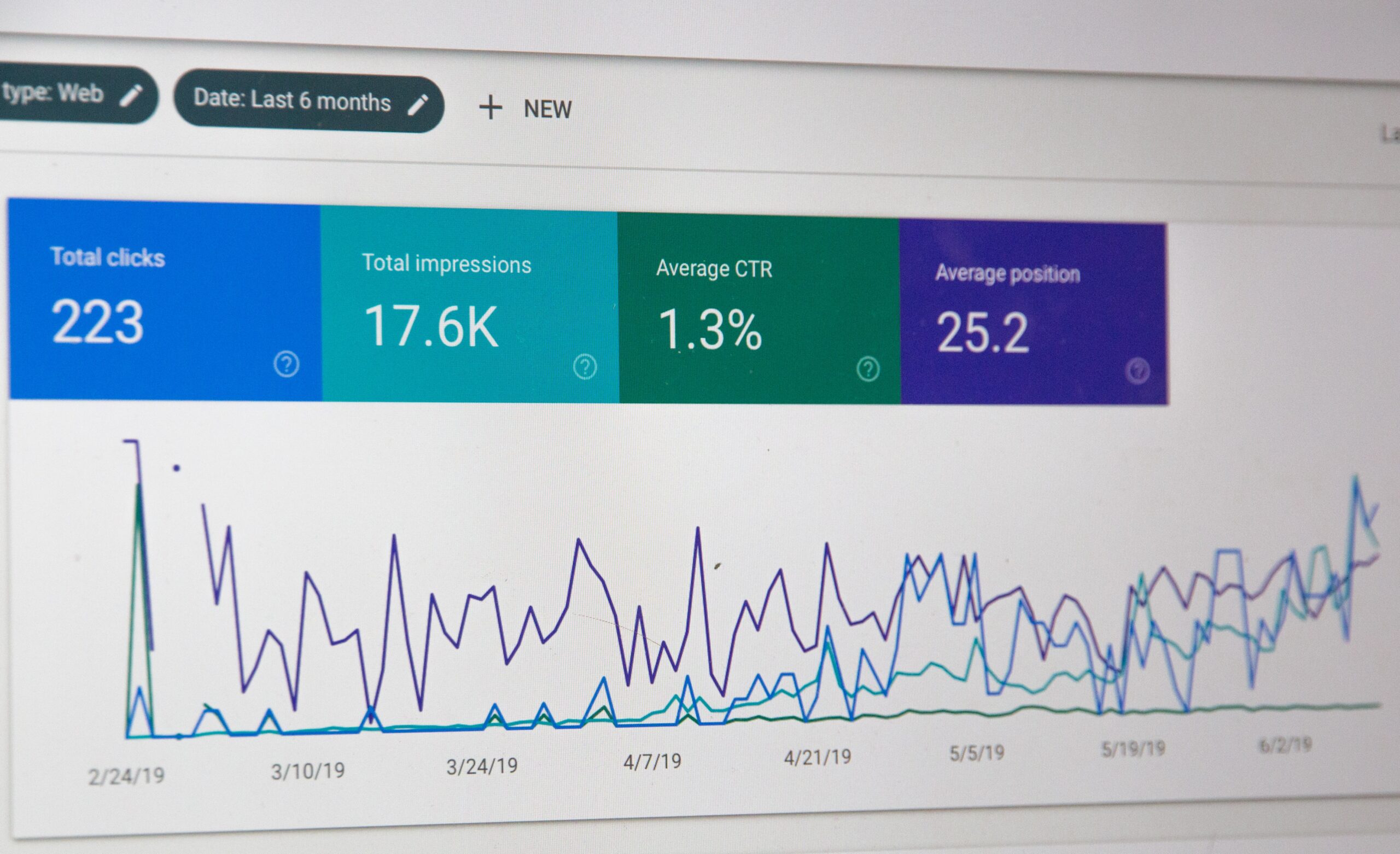Is your content working for you? And we mean, really working? If you’ve been publishing online content for any length of time, you’ll know that blogs and articles have a certain lifespan (5 of the biggest food trends for 2018 isn’t going to be as relevant in 2021!). Traffic is usually highest just after posts are published, commonly tailing off as the months go on.
In response to this problem, many marketers generate a continual stream of new content. Over 70 million new posts are created each month on WordPress alone, resulting in an incredibly competitive market. Considering the quantity out there, but also the time and energy involved in creating new content, is there anything else that can be done?
The good news is yes — and it involves refreshing your existing content! You can make sure your old material works just as hard as those shiny, brand new posts, by updating and reinvigorating text, images and so much more.
Why should I regularly refresh content?
In the dynamic world of content marketing — trends, tools, technology, and tactics evolve rapidly. Search engines continually update algorithms to provide ever more accurate, useful results for a user. This is why regularly updating your content matters, not just in terms of creating new posts but refreshing your old content too.
In a recent digital marketing survey, 61% of companies said that updating old content was the most efficient tactic implemented — massively increasing traffic to their sites. Despite this, only 64% of marketers report actively investing time in improving their search engine optimization (SEO). If you’re serious about increasing your website’s traffic though, it’s something you can’t ignore.
Given the importance of text-based searches, it’s no surprise that blog posts are one of the primary tactics used in content marketing strategies. But it’s not just about creating awesome new posts, you also have to ensure content is found by search engines. This is where our first tip comes in — “content pruning”. Counterintuitively, it involves cleaning up (in some cases deleting) content to improve your SEO.
What is content pruning?

That’s right, we said it. Getting rid of posts can actually help your traffic and SEO. This may seem odd at first, but content pruning is just the process of auditing your site and either removing, updating, or consolidating any redundant pages.
Content pruning is important because it helps you create a map of your site — looking at every page, its traffic, and where it sits in your navigation. You can:
- Learn which posts are performing particularly well
- Identify content gaps or areas with competing content, known as “cannibalization”
- Spot outdated links, duplicate pages, offers, events, or writing that simply isn’t in step with your current content guidelines
Google search console can be a fantastic place to start with this, but a spreadsheet and an eye for organization will also be your friends. Cleaning up your site will boost your SEO rankings, remove unwanted posts and help you start refreshing content with a laser focus.
How can I refresh my old content?
Having undertaken a thorough audit and “pruned” your site accordingly — the next step is to update your old content! Hooray.
Generally speaking, “old” content is anything that has been online for twelve months or more. Whilst this may not seem particularly ancient, breathing new life into posts is vital. This is especially the case for content that’s already proved its value to your audience. So what are some of the best ways to refresh your content?
Pay attention to headings and sections
As a rule, opt for slightly longer, more descriptive headlines (around 10-13 words). H2, H3, and H4 settings should also be used to create depth. Think of H2 subheadings like the chapters in a book with specific headers (H3 tags, then H4 tags) creating further sections. Headings break up text and make it easier to read, meaning that users stay with your content and find the information they’re looking for.
If your post needs additional information — ask yourself whether your content answers all your reader’s needs — create a completely new subsection for any copy, images, or lists. This can be introduced under a new heading — not only improving the structure of the post but adding genuinely valuable content. To get you started, use a tool like AlsoAsked. This collects relevant questions (in response to your keyword) users are also asking about your topic. If your content is lacking answers to a lot of these questions, consider creating some new content to do so.
Don’t forget the visuals
Make sure every post includes at least one image. 65% of people are visual learners. Like headings, images break up walls of text and contribute to your brand (just make sure they’re contextually relevant and high-quality). If possible, opt for original images, and if that’s not possible, try to select royalty-free images that are a little more exciting.
Including a video, infographic or diagram will further help make your content memorable, as well as engaging — something that will no doubt help boost your time-on-page rate.
When refreshing content, you can also add descriptions and alt-text to images, which will help your search rankings and discoverability. After all, many users search via Google Images, if your image is clicked on, it will redirect the user to your website, bringing in more traffic.
Plus, articles with visuals get 94% more views than those without, so when it comes to updating, don’t forgo the pictures!
Consider your style and tone of voice
Your personal style and opinions naturally change over time, and your website is no different.
Check old posts to make sure they match current guidelines and branding, with accessible language and on-brand opinions. Do you need to rewrite any sections? The Scribly team gave their thoughts on what makes great content, and it so often comes back to tone of voice, personality, and resonating with your audience.
Add lists and length
Just like headings and images, lists help break up content. Well-structured and numbered lists, how-to guides, and articles are known to increase views, with listicles achieving double the number of shares than other blog posts. So, if possible, consider reframing your content into one of these formats.
If your content is already a listicle, things will have likely evolved since the publication date and you can now add 10 more relevant points, offering your reader further advice, information, or inspiration!
By adding more valuable content, you’ll also be aligning with the optimal length of posts.
Blogs over 3,000 words receive three times more traffic than shorter posts. Top-performing articles can often be over 5,000 words in length. These lengthy posts tend to answer all the user’s questions, allowing them to complete their user journey with one piece of content.
Be careful not to add words for the sake of it (we’re talking about ‘filler’ content), but if you stick to well-structured, relevant, and truly useful content, you’re onto a winner.
Update links and statistics
Check for (and fix) any broken links. Make sure that if you’re linking to articles and sources, these are the most up-to-date, in-depth, and credible versions. Broken links will leave a bad impression on users, as well as damage your SEO.
For content that’s over a year old, statistics (as well as the article as a whole) might need updating with newer information. You want to present yourself or your company as the expert in your field, so don’t let old posts hold you back.
Don’t forget about internal links too. Chances are, you’ll have published recent blog posts or other types of content that will slot neatly into other articles. Offer your reader greater value by adding these. And, consider whether your CTA needs a make-over too!
Keep the same URL (if the post is performing well)
You might think that updating your old content, means updating the URL too, right?
Actually, it’s best to stick with the same URL, and just update the main body of content. If you start switching up and removing old URLs life can get a little trickier, and, more importantly, it could have a major impact on your existing search results.
Saying that, if your old piece of content isn’t performing so well, it might be time to assess whether the right keywords are in the right place, including in the URL.
Revisit your keyword strategy

Think carefully about your reasons for refreshing your old content. Gaining more traffic is the broad goal — but who do you want to appeal to and why? And, has your user’s intent changed over time? Or has your business changed its opinion on the matter?
If any of these changes have occurred, it’s time to revisit your keyword strategy. Take a scan at the latest keyword results for your blog post and ensure you’re targeting the right ones — remember that high volume, low competition is the sweet spot.
Tip: Writing for SEO requires close attention to the copy and keyword density, headings, images, and genuinely valuable content (pretty much everything we’ve listed above).
Don’t forget to share it with the world
You’ve taken the time and effort to revamp your content, so don’t forget to tell your audience about it!
Treat it as you would a new piece of content: include it in your monthly newsletter, on your social media channels and give it a prime position on your ‘Blog’ webpage.
Refreshing your existing content can sometimes be a tricky task, but it is also one of the most effective ways of increasing traffic to your site.
At Scribly, our expert writers and strategists are on hand to assist with creating and updating amazing content. If you need help refreshing your old content and growing your business, get in touch with our team today to learn more.




